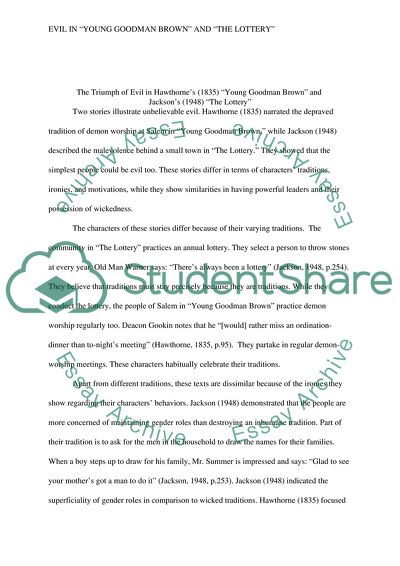Retrieved from https://studentshare.org/literature/1686995-the-triumph-of-evil-in-hawthornes-young-goodman-brown-and-jacksons-the-lottery
https://studentshare.org/literature/1686995-the-triumph-of-evil-in-hawthornes-young-goodman-brown-and-jacksons-the-lottery.


